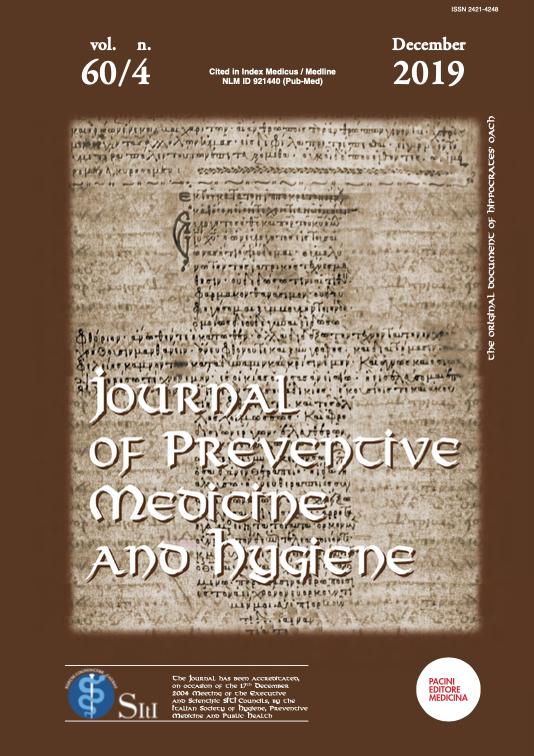Abstract
Objectives: To evaluate the reliability of self-reporting chronic diseases in the baseline data of the Ravansar Non-Communicable Diseases (RaNCD) cohort study in Kermanshah province, western Iran.
Methods: The study was conducted in RaNCD cohort study. To assess the reliability of self-report of chronic disease, a random sample of 202 participants were asked about some of chronic conditions 30-35 days (mean=32) after recruitment.
Results: A range of kappa agreement between 39.52-100%, which the lower statistics was for hypertension and hepatitis and the higher one for cancer, cardiac ischemic, and diabetes.
Conclusion: The self-report of chronic diseases was highly reliable. Therefore self-reporting data for some conditions can be used in situations where the validity is acceptable.
References
Rezaeian S, Esmailnasab N. Social Determinants of Health Associated with Self-Reported HIV Testing among Women. Iran J Public Health. 2013;42(4):436-42.
Sheikh MA, Lund E, Braaten T. Test-retest reliability of self-reported diabetes diagnosis in the Norwegian Women and Cancer Study: A population-based longitudinal study (n =33,919). SAGE Open Med. 2016;4:2050312115622857.
Streed CG, Jr., McCarthy EP, Haas JS. Association Between Gender Minority Status and Self-Reported Physical and Mental Health in the United States. JAMA Intern Med. 2017;177(8):1210-2.
Hinkle SN, Rawal S, Zhu Y, Grewal J, Albert PS, Zhang C. Validation of Self-reported Diagnosis of Gestational Diabetes at 6-weeks Postpartum. Epidemiology. 2017;28(5):747-52.
Azizi F, Ghanbarian A, Momenan AA, Hadaegh F, Mirmiran P, Hedayati M, et al. Prevention of non-communicable disease in a population in nutrition transition: Tehran Lipid and Glucose Study phase II. Trials. 2009;10(1):5.
Okello S, Nasasira B, Muiru AN, Muyingo A. Validity and Reliability of a Self-Reported Measure of Antihypertensive Medication Adherence in Uganda. PLoS One. 2016;11(7):e0158499.
Malekzadeh R 2014;Pages. Accessed at Ministry of Health and Medical Education (MOHME) at http://persiancohort.com/2017.
Brady TJ, Murphy L, O’Colmain BJ, Beauchesne D, Daniels B, Greenberg M, et al. Peer reviewed: A meta-analysis of health status, health behaviors, and health care utilization outcomes of the chronic disease self-management program. Preventing chronic disease. 2013;10.
Vargas CM, Burt VL, Gillum RF, Pamuk ER. Validity of self-reported hypertension in the National Health and Nutrition Examination Survey III, 1988–1991. Preventive medicine. 1997;26(5):678-85.
Chow SKY, Wong FK. The reliability and validity of the Chinese version of the Short‐form Chronic Disease Self‐Efficacy Scales for older adults. Journal of clinical nursing. 2014;23(7-8):1095-104.
Engstad T, Bønaa KH, Viitanen M. Validity of self-reported stroke. Stroke. 2000;31(7):1602-7.
Rauscher GH, Johnson TP, Cho YI, Walk JA. Accuracy of self-reported cancer-screening histories: a meta-analysis. Cancer Epidemiology and Prevention Biomarkers. 2008;17(4):748-57.
Pan A, Teng GG, Yuan J-M, Koh W-P. Bidirectional Association between Self-Reported Hypertension and Gout: The Singapore Chinese Health Study. PloS one. 2015;10(10):e0141749.
Huerta JM, Tormo MJ, Egea-Caparros JM, Ortola-Devesa JB, Navarro C. Accuracy of self-reported diabetes, hypertension and hyperlipidemia in the adult Spanish population. DINO study findings. Rev Esp Cardiol. 2009;62(2):143-52.
Nery Guimarães JM, Chor D, Werneck GL, Carvalho MS, Coeli CM, Lopes CS, et al. Association between self-rated health and mortality: 10 years follow-up to the Pró-Saúdecohort study. BMC Public Health. 2012;12(1):676.
Sargent-Cox KA, Anstey KJ, Luszcz MA. The choice of self-rated health measures matter when predicting mortality: evidence from 10 years follow-up of the Australian longitudinal study of ageing. BMC Geriatr. 2010;10.
Poustchi H, Eghtesad S, Kamangar F, Etemadi A, Keshtkar AA, Hekmatdoost A, et al. Prospective Epidemiological Research Studies in Iran (the PERSIAN Cohort Study): Rationale, Objectives, and Design. Am J Epidemiol. 2018;187(4):647-55.
Eghtesad S, Mohammadi Z, Shayanrad A, Faramarzi E, Joukar F, Hamzeh B, et al. The PERSIAN Cohort: Providing the Evidence Needed for Healthcare Reform. Arch Iran Med. 2017;20(11):691-5.
Keith NR, Clark DO, Stump TE, Miller DK, Callahan CM. Validity and reliability of the Self-Reported Physical Fitness (SRFit) survey. J Phys Act Health. 2014;11(4):853-9.
Coster MC, Bremander A, Rosengren BE, Magnusson H, Carlsson A, Karlsson MK. Validity, reliability, and responsiveness of the Self-reported Foot and Ankle Score (SEFAS) in forefoot, hindfoot, and ankle disorders. Acta Orthop. 2014;85(2):187-94.
Lee WY, Ahn J, Kim JH, Hong YP, Hong SK, Kim YT, et al. Reliability and validity of a self-reported measure of medication adherence in patients with type 2 diabetes mellitus in Korea. J Int Med Res. 2013;41(4):1098-110.
Leatherdale ST, Laxer RE. Reliability and validity of the weight status and dietary intake measures in the COMPASS questionnaire: are the self-reported measures of body mass index (BMI) and Canada's food guide servings robust? Int J Behav Nutr Phys Act. 2013;10:42.
Feng XL, Pang M, Beard J. Health system strengthening and hypertension awareness, treatment and control: data from the China Health and Retirement Longitudinal Study. Bull World Health Organ. 2014;92(1):29-41.
Wang Y, Lee J, Toh MP, Tang WE, Ko Y. Validity and reliability of a self-reported measure of medication adherence in patients with Type 2 diabetes mellitus in Singapore. Diabet Med. 2012;29(9):e338-44.
Hure AJ, Chojenta CL, Powers JR, Byles JE, Loxton D. Validity and reliability of stillbirth data using linked self-reported and administrative datasets. J Epidemiol. 2015;25(1):30-7.
Kargman DE, Sacco RL, Boden-Albala B, Paik MC, Hauser WA, Shea S. Validity of telephone interview data for vascular disease risk factors in a racially mixed urban community: the Northern Manhattan Stroke Study. Neuroepidemiology. 1999;18(4):174-84.


